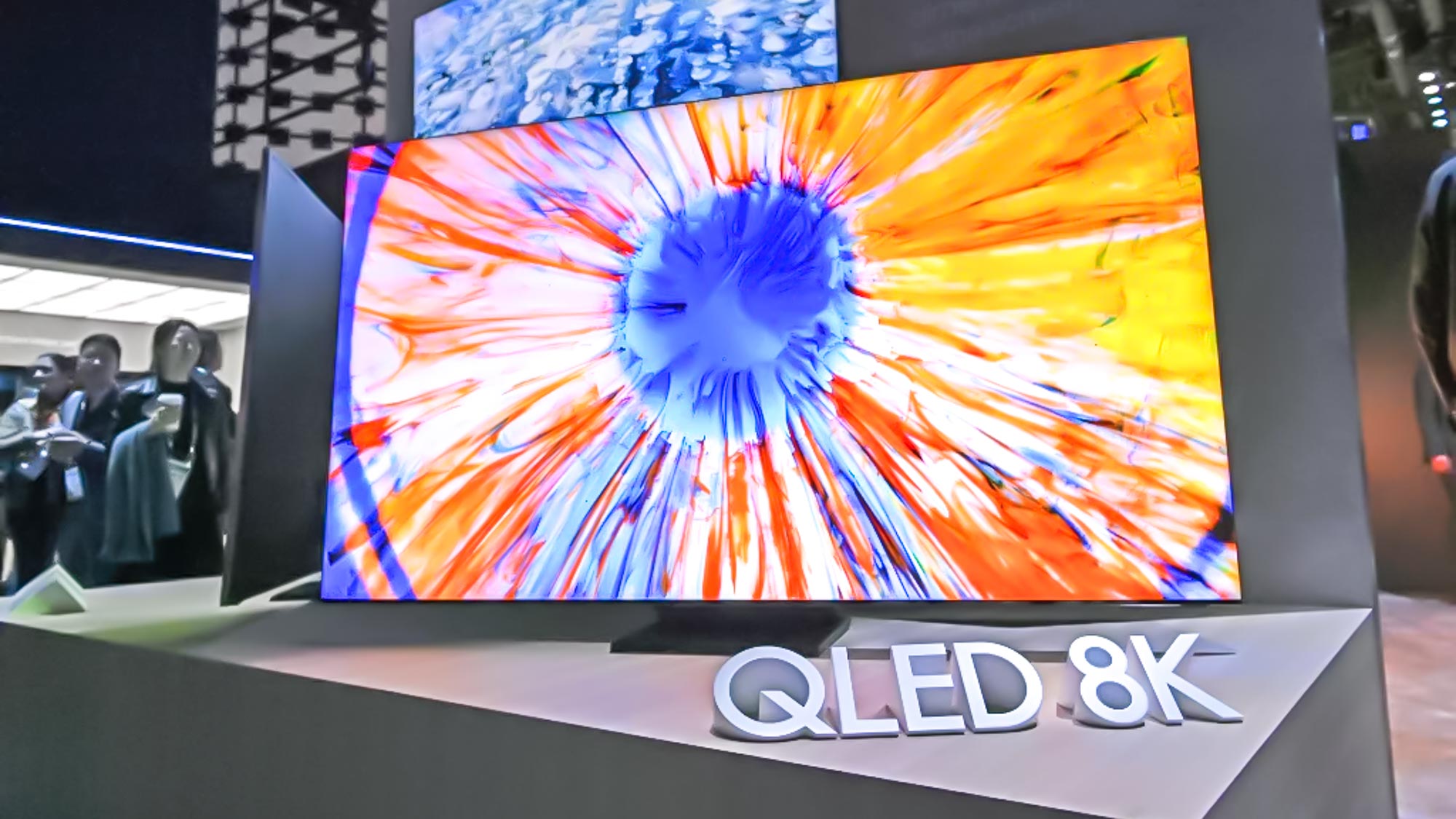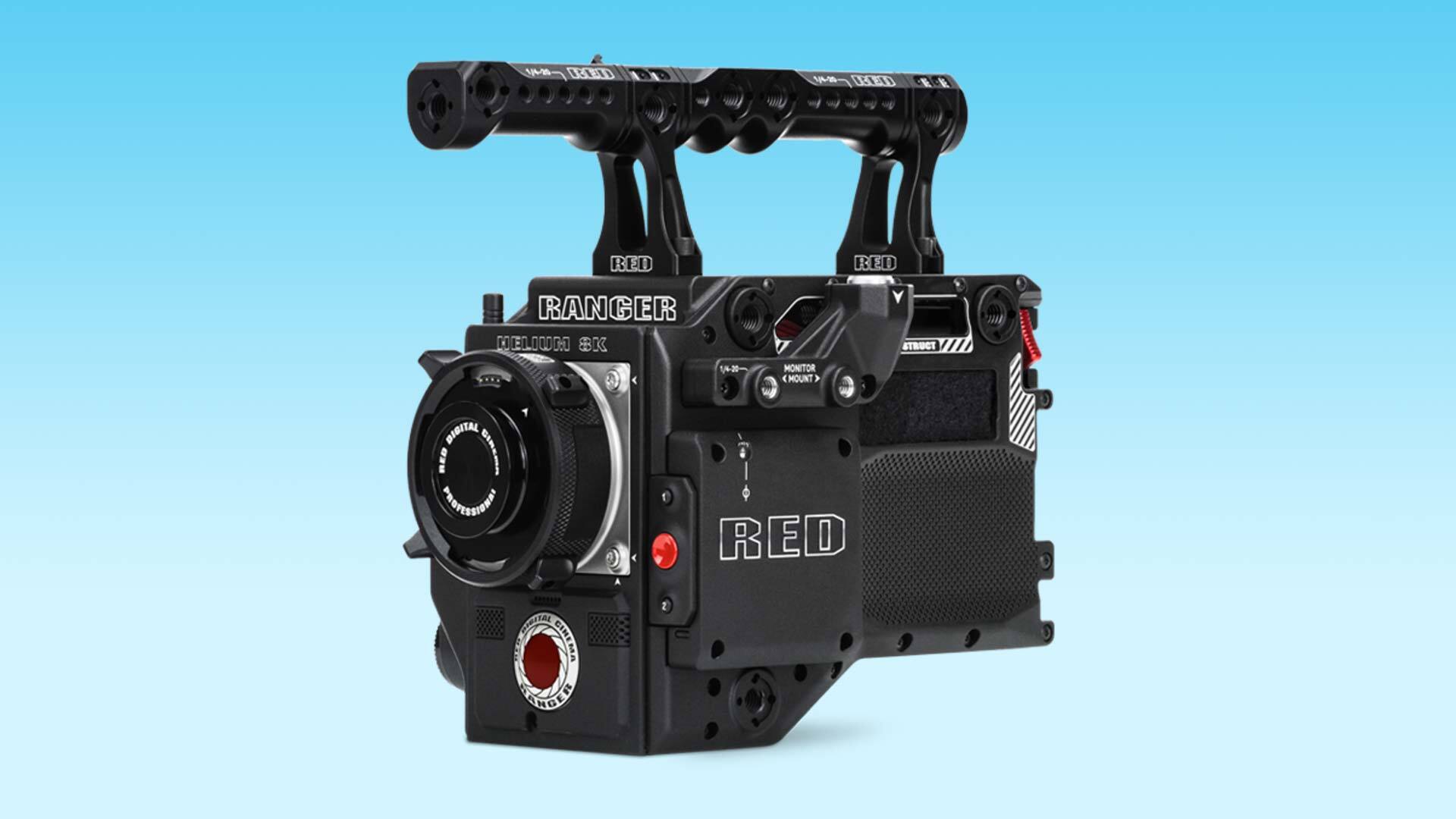8K TVs: What the heck is going on?
No shows, no movies, no streaming options. Why are people supposed to buy 8K TVs, again?

Editor's Note: November 11, 2021 – Only a month after writing this op-ed, TCL has announced the first 8K streaming service, exclusive to TCL's 8K Roku TVs. It's an important step forward for 8K, and one that we hope signals a change in the 8K landscape.
2021 has been the year that 8K TVs finally became available in sizes and prices that the average TV shopper might consider, but 8K adoption is still stalled by one glaring omission: there's still no 8K content. And if this TV reviewer can make a Christmas wish a little early, it's for movie studios or streaming services (or anyone really) to release something in the 8K format.
Recent reviews, like the TCL Roku TV 6-Series 8K (R648) and the LG QNED MiniLED 99 Series 8K TV present us with some of the most affordable 8K sets to ever hit the market, but testing and reviewing these models is a little like banging your head against the wall. For all their technical superiority, without any real 8K content to watch on these TVs, anybody with an 8K TV is still stuck with 4K content, relying on upscaling to make it look better on the higher resolution screen.
What little 8K content is out there is, frankly, boring. It's mostly travelogues and nature videos, with the occasional demo video from 8K camera makers. In a recent review, my colleague Matt Murray had mostly positive things to say about the 8K set, but made a valid point as he closed out the review. "The sticking point remains 8K itself. It’s still a phantom format, with no major movies or TV series taking advantage of it in any real way."
But it wouldn't take much to fix that. Even a mediocre indie film or web series that effectively used 8K could get real traction with the small but growing audience of 8K TV owners.
A quick rundown of the state of 8K content highlights the dearth of content using the higher resolution. (For a broader discussion of the topic, check out 8K TVs: What can you actually watch in 8K?)
- The best TVs right now
- Black Friday TV deals: great early sales
The future of 8K: Cable, satellite and broadcast
Despite the growth of streaming, cable and satellite is still a major distribution channel for content, particularly at higher resolutions. But there's not much to speak of – DirectTV has a few dedicated 4K channels, while Dish and Comcast mostly offer 4K only for On Demand movies.
Get instant access to breaking news, the hottest reviews, great deals and helpful tips.
Most 4K support winds up being streaming through common services like Netflix. With relatively few channels offering 4K content, and some common set top boxes not even equipped to handle 4k resolution, these legacy players might not be the place to look for leadership in 8K support.
Oddly enough, the best bet for traditional TV providers might be over the air broadcasts. The ATSC 3.0 standard (also called NextGenTV) includes the ability to send 4K signal over the air, and theoretically can handle 8K resolution as well. It's still early days on that front, with ATSC 3.0 rolling out one or two channels at a time in major cities across the country, but it's the one bright spot when it comes to 8K TVs getting proper UHD programming.
The future of 8K: Movie studios

The elephant in the room for any new format is Hollywood. Movie releases and episodic content won't be available in 8K until filmmakers and studios start shooting in 8K. While there is some forward progress on this front, likely more than is publicly known, it's still very hush hush.
Recent well-funded releases, such as hit Marvel series like WandaVision and The Falcon and the Winter Soldier are available to stream in 4K, providing something that looks great on today's 4K TVs.
And, like The Falcon and the Winter Soldier, some are even shot at higher resolution than 4K. The production team used 8K Panavision Millennium DXL2 cameras and shot some action scenes in 6K with Blackmagic Design Pocket Cinema Cameras.
Does this mean we'll be getting an 8K re-release of the latest Marvel shows? Maybe, but probably not. The higher resolution is instead used to afford more freedom in the editing room, letting filmmakers tighten shots and get close-ups on actors without losing picture quality, since they can scale down to 4k as needed.
However, there's a glimmer of hope from just knowing that 8K footage is being captured, and that the ecosystem of equipment and the workflows of movie production are starting to work with the higher resolution in some capacity.
In fact, the best hope might be from titles that get both a mainstream and IMAX release. Dune is getting both a standard and IMAX theatrical release (our streaming editor, Henry Casey says IMAX will be the best way to watch the film), which again provides a tantalizing possibility of there being content out there that would actually make the most of the 80+ inch screens and more than 33 million pixels offered by many of the recently sold 8K TVs.
The future of 8K: Streaming
Which brings us to streaming. In a few days, Dune will be released in theaters, but it will also be coming to living rooms through HBO Max on the same day. If you're paying for the ad-free version of the streaming service, you can watch it in 4K HDR, getting the best version of the film right from Warner Bros.
Is it too much to hope that there might be an 8K version that lets home theater owners replicate the full IMAX experience? Well, in a word, no.
Not to spend too much time talking about cameras again (I swear, I'm not usually one to get into the nitty-gritty of film production, but it's relevant to this topic), but the IMAX portions of Dune, though shot for a different aspect ratio and made for a larger movie screen, weren't captured in 8K. The film's Arri Alexa LF IMAX cameras record in native 4.5K, only slightly higher than what your 4K TV can handle – and again, that extra resolution is there mostly to give movie makers some freedom in the editing bay.
If the biggest movie of 2021, with its massive scope and scale, isn't even being shot at higher than 4K, then it's unlikely we'll ever see an 8K version of the film. And if we do, it will be done with the same sort of upscaling that 8K TVs already use for 4K content.
Which brings us back to the crux of the matter – the lack of 8K content. No amount of support for new discs or higher-bandwidth streaming will be able to make 8K content where there was none before. Upscaling can only go so far, and from what I've seen, it doesn't quite cut it. It's okay for making your 8K TV look like a really good 4K display, but even with the best processing and AI enhancement, it doesn't quite look right. That means you either need new 8K scans from film, or new content shot in 8K.
Studio-backed streaming services such as Disney+, HBO Max and Paramount Plus can draw from a significant library of movies, and some streaming services have become studios in their own right, such as Netflix, pumping out original shows and movies, and distributing others. If the key to 8K content is native 8K material, they have to start making it themselves.
The future of 8K: No Blu-ray on the way
If you're holding out for an 8K version of Blu-ray UHD discs, I wouldn't hold my breath. Not only are there no announced or even rumored 8K Blu-ray players, or an 8K Blu-ray disc format on the horizon, there's even some speculation that 8K video may be too data-dense for current disc capacities. This issue could be sidestepped by returning to multiple discs for a single movie, or heck, maybe they'll just make the discs larger, and we'll get the Blu-ray equivalent of laser disc in the coming years.
All joking aside, I haven't seen anything that suggests 8K Blu-ray is on the way in the next year or two. There is a higher-density triple-layer BDXL format that's under development, but looking at past trends for 1080p and 4K adoption, it could still be a few years yet before 8K physical media is available.
All of this is also ignoring the question of whether disc-based movie distribution will last much longer, anyway. A report from earlier 2020 in Variety reported that Warner Brothers and Universal have combined their DVD and Blu-ray businesses after losing billions to declining physical media sales. As many studios transition to their own streaming services, it's possible that disc-based media could get phased out entirely, instead of adopting a new niche format.
The final nail in the coffin? Chris Chinnock, executive director of the 8K Association, wrote off 8K Blu-ray entirely back in 2019. In an interview with Inside CI, he made it pretty clear. "The Blu-ray Disc Association is not looking at 8k," said Chinnock. "Discussions could start again, but I see this as a low probability."
The bottom line is that physical media for 8K may never be a reality.
Who could make an early play for 8K? YouTube
But there's one major player in the streaming game that stands uniquely well positioned to make an 8K play early, and that's YouTube.
YouTube is one of the few outlets for 8K content already, and YouTube TV, a separate subscription-based cable replacement service, could leverage that streaming know-how with an 8K YouTube original.
We've already seen one YouTube Original become a breakout hit, though you might not have realized it. Cobra Kai, which has it's fourth season debut later this year, may have found its audience on Netflix, but it started on YouTube, as a YouTube Original, available only to paid subscribers. Granted, it's no Dune, but you can stream it in 4K just fine.
Is it that much of a stretch to hope that a similar series could give us a show in 8K? Even sticking to 8K-friendly content like nature scenes and beautiful detailed closeups, a series that gives 8K TV owners something to watch at the full resolution their TV provides could have a small, but loyal audience. With a little promotion, something like that could go a long way to quell some fears in TV shoppers' minds about buying into 8K this early.
A competently shot short form series available in 8K, even with one or two shots per episode that take advantage of the visual spectacle that 8K affords, can go a long way in this transitional period prior to major Hollywood involvement. Plenty of YouTube series could transition to 8K pretty easily, like cooking shows, beauty tutorials, fitness instruction, or music videos. (I'd suggest product reviews and unboxing videos, but I wouldn't want to make extra work for my colleagues.)
If I were a content maker or a film student looking to get my foot in the door, I would invest in an 8K camera or try to partner with LG or Samsung or another 8K TV maker. You don't even need to pay big money for something like a Red Helium 8K camera, you could shoot with a phone, like the Samsung Galaxy S21 or the Asus ROG Phone 5, or one of the other 8K-capable smartphones out there. The point is that there's a chance to start carving out a niche in the 8K world now, while there's plenty of room for newcomers to make a mark. It might just be amateurs that give us the first real market for 8K media.
The bottom line… for now
At the end of the day, it's still hard for me to recommend 8K TVs to anyone, unless it happens to be a smoking deal. And until an 8K TV can show the average watcher something that they actually want to see in that higher resolution, then 8K ultra HD sets will continue to be a hard sell.
But hey, maybe Hollywood has a surprise up their sleeve for the holiday season. Or maybe some enterprising director looking for a break can make headway with an 8K camera. It's a wide open opportunity right now, and it's not everyday that such an opportunity arises.
Here's hoping someone takes advantage of it, and gives 8K TV shoppers a reason to buy.
- Best Black Friday 65-inch TV deals: Get 4K on the cheap
Brian Westover is currently Lead Analyst, PCs and Hardware at PCMag. Until recently, however, he was Senior Editor at Tom's Guide, where he led the site's TV coverage for several years, reviewing scores of sets and writing about everything from 8K to HDR to HDMI 2.1. He also put his computing knowledge to good use by reviewing many PCs and Mac devices, and also led our router and home networking coverage. Prior to joining Tom's Guide, he wrote for TopTenReviews and PCMag.

